Avoid Artificial Sweeteners, Be Healthier and Live Longer
New Years Resolution Series Continues: Avoid NutraSweet
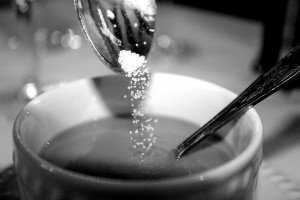 The Health Dangers of NutraSweet
The Health Dangers of NutraSweet
Aspartame can be found in most diet sodas and in other artificially sweetened food products. Commonly known as NutraSweet or Equal, it is broken down by the body into methanol and formaldehyde.
Toxic levels of methanol are linked to systemic lupus and now Alzheimer’s disease.
Methanol toxicity can cause depression, brain
fog, mood changes, insomnia, seizures, and similar symptoms associated with multiple sclerosis.
As for formaldehyde, it is grouped into the same class of drugs as cyanide and arsenic.
An EPA assessment of methanol states that methanol “is consid
ered a cumulative poison due to the low rate of excretion once it is absorbed. In the body, methanol is oxidized to formaldehyde and formic acid; both of these metabolites are toxic.” They recommend a limit of consumption of 7.8 mg/day. A one-liter (approx. 1 quart) aspartame-sweetened beverage contains about 56 mg of methanol. Heavy users of aspartame-containing products consume as much as 250 mg of methanol daily or 32 times the EPA limit.
When the temperature of aspartame exceeds 86 degrees F, the wood alcohol in the product is turned into formaldehyde and then into formic acid. Formic acid is the poison contained in the sting of a fire ant.
There are over 92 documented symptoms from the use of aspartame.
Aspartame accounts for over 75 percent of the adverse reactions to food additives reported to the FDA. Many of these reactions are very serious including seizures and death.
A few of the 90 different documented symptoms listed in the report as being caused by aspartame
include: Headaches/migraines, dizziness, seizures, nausea, numbness, muscle spasms, weight gain, rashes, depression, fatigue, irritability, tachycardia, insomnia, vision problems, hearing loss, heart palpitations, breathing difficulties, anxiety attacks, slurred speech, loss of taste, tinnitus, vertigo, memory loss, and joint pain.
Could Aspartame be contributing to your health condition?
One common complaint of persons suffering from the effect of aspartame is memory loss. Ironically, in 1987, G.D. Searle, the manufacturer of aspartame, undertook a search for a drug to combat memory loss caused by excitatory amino acid damage.
One expert, Dr. Olney, a professor in the department of psychiatry, School of Medicine, Washington University, a neuroscientist and researcher, and one of the world’s foremost authorities on excitotoxins, informed Searle in 1971 that aspartic acid caused holes in the brains of mice.
More About NutraSweet and Other Sweeteners
NutraSweet (Aspartame)
Aspartame has been associated with a multitude of health risks and has largely lost favor around the world. Consider that the FDA had its concerns and denied approval of aspartame for 16 years before it finally gave in to political/economic pressure. This controversial artificial sweetener was approved through an interesting chain of events. When then-president Ronald Reagan brought Don Rumsfeld, former CEO of the aspartame manufacturer, Monsanto, to Washington, a new FDA commissioner was also hastily appointed.
The new commissioner approved the artificial sweetener and then went on to become a consultant for NutraSweet’s public-relations firm, receiving $1,000 a day for the next 10 years!
Aspartame, commonly known as NutraSweet or Equal, is an artificial sweetener. The body breaks it down into methanol and formaldehyde to metabolize it. Methanol toxicity causes depression, brain fog, mood changes, insomnia, seizures, and similar symptoms associated with multiple sclerosis. Formaldehyde is grouped into the same class of drugs as cyanide and arsenic. When the temperature of aspartame exceeds 86 degrees F, the wood alcohol in it is turned into formaldehyde and then into formic acid. Formic acid is the poison contained in the sting of a fire ant.
There are over 92 symptoms documented from using aspartame.
What About Splenda
Splenda is an artificial sweetener derived from raffinose, a starch derived from sugar beets. The chemical sucralose, which contains chlorine, is marketed this way: “It comes from sugar, so it tastes like sugar.” But it isn’t natural at all.
The chemical sucralose is not a form of sucrose (cane sugar). Sucralose/Splenda is produced through artificially substituting three hydroxyl groups (hydrogen + oxygen) with three chlorine atoms in the sugar (sucrose) molecule. Natural sugar is a hydrocarbon built around 12 carbon atoms. When transformed into Splenda it becomes a chlorocarbon, in the same family as deadly pesticides like DDT, insecticides, biocides, disinfectants like Clorox Bleach, and WWI poison gas like dichlorourea.
A study done at Duke University and published in the Journal of Toxicology and Environmental Health has some interesting news about the sugar substitute known as Splenda (sucralose).
• It reduces the amount of good bacteria in the intestines by 50%. The bacteria in your bowels, some 100 trillion of them—about three pounds worth—outnumber the cells in your body by a factor of 10 to one. These bacteria, also called gut flora, line your intestinal tract and serve as your first line of defense against potential pathogens (viruses, bad bacteria, and yeast). They play a crucial role in establishing an overall healthy immune system. When bad bacteria and or yeast become overgrown in your intestinal tract, you have a condition called dysbiosis. Dysbiosis has been linked with disorders like yeast infections, irritable bowel syndrome, and autoimmune disorders—including rheumatoid arthritis.
• It increases the pH level in the intestines. The stomach needs an acidic environment in order to digest food and destroy potentially harmful pathogens, including unwanted bacteria and yeast. Low stomach acid triggers a chain reaction of digestive disorders, including malabsorption. Foods may be incompletely digested and subsequently absorbed into the bloodstream, where they can lead to food allergies, triggering pain and inflammation throughout the body.
According to James Bowen, M.D:
“Any chlorocarbons not directly excreted from the body intact can cause immense damage to the processes of human metabolism and, eventually, our internal organs. The liver is a detoxification organ, which deals with ingested poisons. Chlorocarbons damage the hepatocytes, the liver’s metabolic cells, and destroy them. In test animals Splenda produced swollen livers, as do all chlorocarbon poisons, and also calcified the kidneys of test animals in toxicity studies.”
Definitely a wise decision to avoid Splenda whenever possible!
What About Brown or Raw Sugar
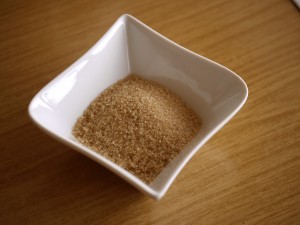 It is often said that brown sugar is a healthier option than white sugar. But you can chalk that claim up to clever marketing. In reality, brown sugar is most often just ordinary table sugar that is turned brown by the reintroduction of molasses. (Normally, molasses is separated and removed when sugar is created from sugarcane plants.) In some cases, brown sugar—particularly when it is referred to as “raw sugar”—is merely sugar that has not been fully refined. But more often than not, manufacturers prefer to reintroduce molasses to fine white sugar, creating a mixture with 5%–10% molasses. This process allows them to better control the color and size of the crystals in the final product.
It is often said that brown sugar is a healthier option than white sugar. But you can chalk that claim up to clever marketing. In reality, brown sugar is most often just ordinary table sugar that is turned brown by the reintroduction of molasses. (Normally, molasses is separated and removed when sugar is created from sugarcane plants.) In some cases, brown sugar—particularly when it is referred to as “raw sugar”—is merely sugar that has not been fully refined. But more often than not, manufacturers prefer to reintroduce molasses to fine white sugar, creating a mixture with 5%–10% molasses. This process allows them to better control the color and size of the crystals in the final product.
Because of its molasses content, brown sugar or raw sugar does contain certain minerals not present in white sugar: calcium, potassium, iron, and magnesium. But since these minerals are present in only minuscule amounts, there is no real health benefit to using brown sugar.
What about honey? Honey is a simple sugar, while healthier than raw sugar it is broken down the same way as any simple, high glycemic carbohydrate. Like sugar, a little honey goes a long way.
A Natural Alternative: Stevia
For a healthy alternative to sugar, my first choice is the natural sweetener Stevia. It is a South American herb that has been used as a sweetener by the Guarani Indians of Paraguay for hundreds of years. The leaves of the small, green Stevia rebaudiana plant have a delicious and refreshing taste that can be 30 times sweeter than sugar, so a little goes a long way. For more info, visit www.stevia.com. You can find Stevia at any health-food store. While it may take time to get used to its taste, it won’t deplete your good bacteria (like Splenda), increase your risk of cancer (like Sweet’N Low), or cause neurotoxicity (like NutraSweet).
OK so push comes to shove and you can’t find Stevia when out on the town-use Sweet’N Low.
Yes, Sweet’N Low. I know it is supposed to cause cancer and kill you in a single teaspoon, but this a myth not the truth. The truth is that the cancers where only seen in mice, which were fed tons, truck loads of this stuff over a short period of time. I don’t think you’d ingest this much in a life span. But again my first choice is Stevia.

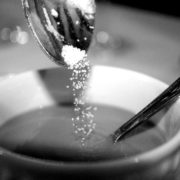
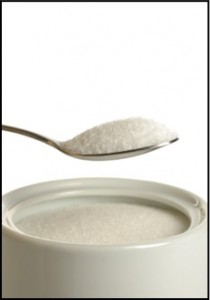


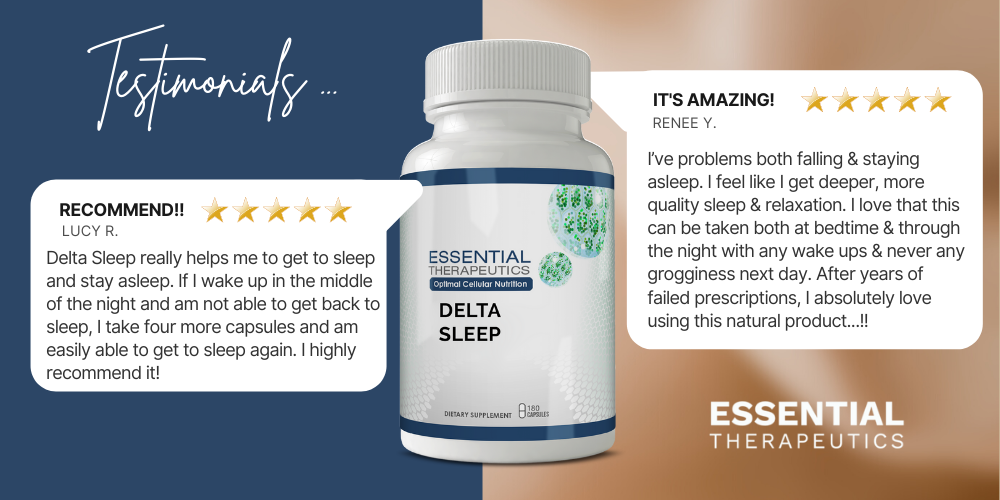

Thank you, this was so informative.
Katherine